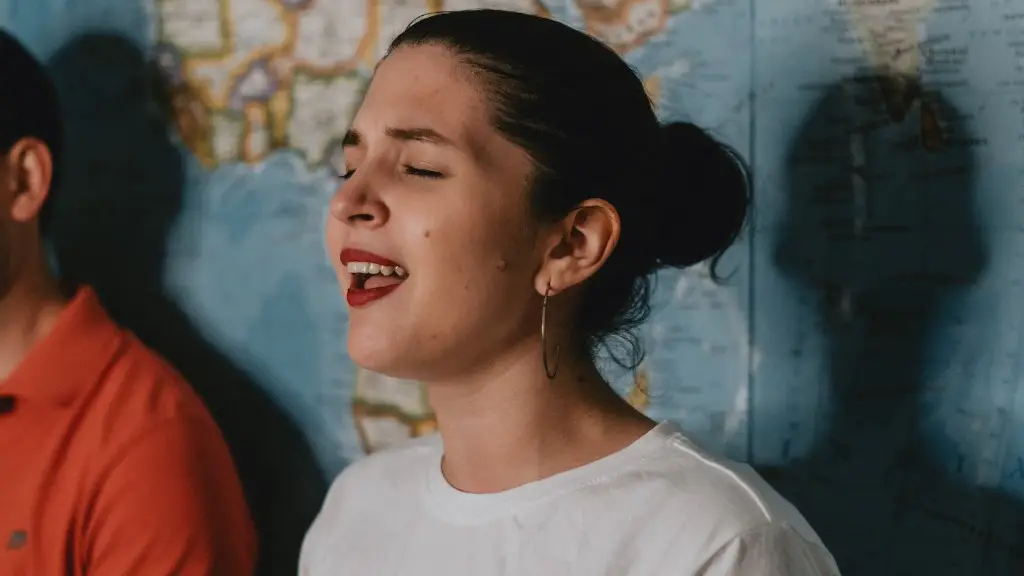Landscape photography can be incredibly rewarding, both creatively and personally. It can also be quite challenging, especially when trying to capture a sense of the scale and grandeur of the scene before you. In this guide, we’ll share some tips and techniques on how to compose landscape photography that told convey the feeling and atmosphere of the location.
1. Select an interesting subject matter: When shooting landscapes, look for interesting foreground subjects to add depth and context to your images. This could be anything from a lone tree to a group of rocks.
2. Use a tripod: A tripod will help you keep your camera steady and prevent blurriness.
3. Select the right lens: Choose a wide-angle lens for landscape photography to capture as much of the scene as possible.
4. Set the right exposure: To make sure your landscape images are properly exposed, use the camera’s histogram feature.
5. Shoot in RAW: Be sure to shoot in RAW format to preserve the quality of your images.
How do you write a landscape composition?
1. Use the rule of thirds: This is one of the most important composition rules and is easy to apply. Simply divide your frame into three equal sections horizontally and vertically, then position your subject along one of the lines or at one of the intersections.
2. Look for leading lines: Leading lines are another great way to add interest and depth to your photos. Look for lines that lead the eye into the frame, such as roads, fences, or rivers.
3. Include foreground interest: Including foreground interest is a great way to add depth to your photos. Look for interesting objects in the foreground, such as rocks, flowers, or leaves, and position them so they help lead the eye into the photo.
4. Use negative space to isolate your subjects: Negative space is the area around your subject. Using negative space can help to isolate your subject and make it the focus of the photo.
5. Use a vanishing point: A vanishing point is a point in the distance where lines seem to converge. Including a vanishing point in your photo can help to add a sense of depth and scale.
6. Change your lens focal length: The focal length of your lens can have a big impact on the composition of your
Location:
The first pillar of landscape photography is location. This is all about where you choose to shoot your landscapes. It can be somewhere you know well, or somewhere you have never been before. It is important to spend some time scouting out a location before you shoot, so that you have a good idea of the best composition and light.
Composition:
The second pillar of landscape photography is composition. This is all about how you choose to frame your landscape shots. It is important to consider the rule of thirds and leading lines when composing your shots. The best landscape shots often have a strong focal point, so it is important to consider this when composing your shots.
Light:
The third pillar of landscape photography is light. This is all about the light conditions you choose to shoot in. Landscape photography is often shot in the golden hour, so that the light is soft and flattering. However, you can also get some great shots in other light conditions, such as in the blue hour or in stormy weather.
Processing:
The fourth pillar of landscape photography is processing. This is all about the post-processing you do on your landscape shots. It is important to consider things like white balance, exposure
What makes a good landscape composition
A good composition will have lines that guide the viewer through the scene. For landscapes, look for natural leading lines such as the ridge of a mountain, a footpath, or triangular rocks. If the lines converge on a subject or a vanishing point, that is even better.
The rule of thirds is a popular trick for composing perfectly balanced and aesthetically-pleasing photographs. This rule creates a grid of three horizontal lines and three vertical lines, which you can set up through your viewfinder or on the back screen of your camera. When composing your photograph, place your subject along one of these lines or at one of the intersections. This will help to create a more balanced and pleasing composition.
What are the golden rules of landscape photography?
The golden rule of landscape photography is to shoot during the golden hours, which are the hours around sunrise and sunset. During these times, the light is softer and more flattering, and the colors are more saturated.
In photography, composition is the arrangement of visual elements in a frame. Good composition can make a huge difference in the overall quality of your photos. Here are five key elements of composition that you should keep in mind:
1. Avoid Too Much Negative Space
Negative, or empty, space is great for balancing your photo and emphasizing a focal point. However, too much negative space can make your photo look uninteresting and unfinished.
2. Embrace Lines
Lines are a great way to add interest and depth to your photos. They can help lead the eye toward your subject and add a sense of movement.
3. Obey the Rule of Thirds
The rule of thirds is a compositional guideline that suggests dividing your frame into thirds, both horizontally and vertically. Placing your subject at the intersections of these lines can create a more balanced and visually appealing photo.
4. Create Depth With a Clear Foreground, Middleground, and Background
A photo with a clear foreground, middleground, and background will appear more three-dimensional and have greater depth. This can be achieved by using a wide-angle lens or by positioning your subject off to the side.
5. Use Contrast
What are the 7 elements of landscape design?
Landscape design is all about creating a space that is functional, aesthetically pleasing, and in harmony with the natural surroundings. The key principles of landscape design include unity, scale, balance, simplicity, variety, emphasis, and sequence. These elements are all interconnected and must be considered together when creating a landscape design. By using these principles, you can create a space that is both beautiful and functional.
A good landscape photo is one that is impactful and engages the viewer. It should have enticing elements like colors, textures, or shapes that catch the viewer’s eye and hold their attention. The photo should also tell a story and evoke emotion.
What is the best aperture for landscape
For landscape photography, you’ll want to use a higher aperture setting, such as f/16 to f/22. These are narrower apertures, which means they allow less light into your camera. As a result, you’ll need to use longer shutter speeds to compensate for the lack of light. This combination will create the correct light exposure for your landscape photos.
Design principles are like rules of thumb that designers can rely on when making decisions about their work. They help to ensure that designs are well-balanced, focus on the most important elements, are simple and uncluttered, have a strong visual rhythm, and are in proportion. By adhering to these principles, designers can create cohesive, visually appealing designs that are easy for users to understand and use.
What are the 5 classic landscape composition types?
1. Group Mass Composition:
In a landscape painting, it can be helpful to create a sense of unity by grouping together similar objects. For example, you could cluster together trees, rocks, or buildings.
2. Diagonal Line Composition:
A diagonal line can add interest and energy to a landscape painting. You could use a diagonal line to lead the eye through the painting, or to divide the painting into distinct sections.
3. S-shaped Composition:
An S-shaped composition can be pleasing and eye-catching. You could use an S-shaped line to lead the eye through the painting or to create a sense of movement.
4. O-shaped Composition:
The O-shape is a classic composition that often creates a sense of unity. You could use an O-shaped line to enclose a group of objects, or to frame the main subject of the painting.
5. Circle Composition:
A circle is another classic composition that can be used in a variety of ways. You could use a circle to enclose a group of objects, or to frame the main subject of the painting.
There are a few key things to remember when designing a sustainable landscape. First, you need to protect the site and surrounding land and ecosystems. This means conserving soil, water, and wildlife. Second, you need to reduce water use. This can be done by using drought resistant plants and materials, and by minimizing mowing requirements. Third, you need to limit pesticide use. fourth, use plants and materials from local sources. This helps to reduce your carbon footprint and supports the local economy. Finally, ensure the health and safety of your landscape. This includes using safe, nontoxic materials and products.
What is the 3/4 rule in photography
The rule ofthirds is a great way to add interest to your photos and make them more eye-catching. By placing your subject off to the side, you create a more dynamic and interesting composition. This technique is especially effective when used with landscape or architectural photos.
The principles of landscape design are important concepts to keep in mind when arranging features in your landscape. Proportion, order, repetition, and unity are all important factors to consider in order to create a pleasing and beautiful landscape. By following these principles, you can create a landscape that is both visually appealing and functional.
Do landscape photographers make money?
Hello!
If you’re a landscape photographer looking to make some money from your work, there are still plenty of opportunities out there. You can pitch your photos to potential clients such as tourism boards, magazines, travel agencies, local authorities, heritage sites, and outdoor businesses. With a little bit of effort, you can find plenty of clients who are interested in paying for your stunning landscape photos.
As you probably know, the Earth rotates on its axis, and this causes the stars to appear to blur after a certain amount of time. The length of time before they blur depends on the focal length of your lens – the longer the focal length, the longer you can expose for without the stars blurring.
The rule of thumb is that the longest exposure you can use before the stars start to blur is equal to 400 divided by the focal length of your lens, in millimeters. So, for example, if you’re using a 28mm lens on a full frame camera, 400 divided by 28 equals 143 seconds – that’s the longest you can expose for before the stars start to blur.
Of course, this rule of thumb is only a general guide – it’s always best to test it out for yourself to see what works best.
Which is the most important part of landscape photography
The sensitivity to light, of the medium—the film or the digital camera sensor—is important in landscape photography, especially where great detail is required. This is because a high sensitivity to light allows for a greater range of light to be captured, and therefore a greater level of detail to be recorded.
Each style has its own distinct approach to photographing landscapes. Representational landscape photography captures the scene as it actually appears, without any distortion or manipulation. Impressionistic landscape photography uses techniques such as blurring and high contrast to create an overall effect, rather than documenting the scene. Abstract landscape photography takes a more conceptual approach, often using close-ups or unusual perspectives to create an image that is more about form and feeling than literal representation.
Final Words
The best way to compose landscape photography is to find a subject that is interesting and provides a good point of interest. Try to avoid busy backgrounds and use a wide variety of lens to capture the scene. Experiment with different compositions to see what works best for the particular landscape you are shooting.
Overall, to compose landscape photography well you need to understand and utilize the various principles of composition. This means using an understanding of line, shape, form, texture, pattern, color, and space to create an visually appealing photograph. By utilizing these principles, and getting a feel for what works well together and what doesn’t, you can create beautiful landscape photographs that are pleasing to look at and that capture the essence of the landscape.


